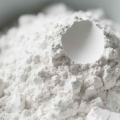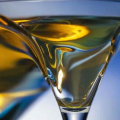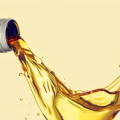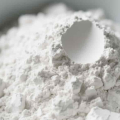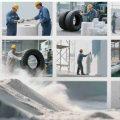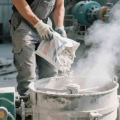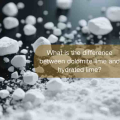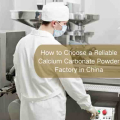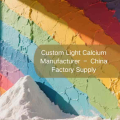- Welcome to China Calcium Carbonate Manufacturer
- WeChat:15078781000
I. Classification and Industrial Value of Calcium Carbonate
Surface modification technologies are revolutionizing the global calcium carbonate industry, enabling this $22 billion market to evolve from basic fillers to high-performance functional materials. By mastering basic processes like mechanical grinding, chemical precipitation, and nanoparticle synthesis, manufacturers now produce three strategically distinct calcium carbonate types:
1️⃣ Heavy Calcium Carbonate (GCC)
Production: Mechanically crushed natural limestone/calcite
Key Parameters: Particle size 1-45μm, oil absorption 25-48mL/100g
Market Share: 62% of global calcium carbonate consumption (Grand View Research, 2024)
2️⃣ Light Calcium Carbonate (PCC)
Synthesis: Chemically precipitated with 98% crystal morphology control
Performance: Particle size 0.5-15μm, specific surface area 5-25m²/g
Certification: FDA-compliant PCC for food/pharmaceutical applications
3️⃣ Nano Calcium Carbonate
Technical Challenges: 1-100nm particle size with anti-aggregation solutions
Innovative Uses:
✓ 30% stronger reinforcement than carbon black in rubber
✓ Emerging lithium battery separator coatings
Industry Challenges: Unmodified calcium carbonate faces critical limitations—
⚠️ High oil absorption (>100mL/100g) increases processing energy costs
⚠️ Poor organic-inorganic compatibility causes material failure
⚠️ >80% aggregation rate in nano-grade products
This drives global manufacturers to adopt surface modification technologies, transforming calcium carbonate into:
🔸 An “invisible reinforcement framework” for plastics
🔸 A “smart rheology controller” in coatings
🔸 A “biomimetic mineralization template” for biomedical materials

II. Necessity of Surface Modification
Critical Performance Upgrades:
✓ 40-60% reduction in oil absorption
✓ 25% increase in composite material strength
✓ Enables high-end applications (e.g., medical devices, EV components)
Commercial Value Growth:
Base filler ((200/ton)→Functionalizedcalciumcarbonate(800-$1.500/ton)
III. Heavy Calcium Carbonate (GCC) Modification Methods
1. Physical Coating Modification
Mechanism: Van der Waals force adsorption of stearic acid/PE wax
Equipment: High-speed mixers (e.g., Henschel)
Applications: Rubber tire fillers, low-cost PVC products
2. Chemical Grafting Modification
Reagents: Titanate/aluminate coupling agents
Bonding: -OR groups react with surface -OH groups
Case Study: 40% GCC content in automotive PP bumpers
3. Mechanochemical Modification
Integrated Process: Simultaneous grinding and modification
Energy Savings: 22% lower than traditional methods (NETZSCH data)
4. Surface Deposition Modification
Technology: SiO₂/CaCO₃ core-shell structures
Certifications: FDA 21 CFR 182.5191. EU 10/2011
IV. Light Calcium Carbonate (PCC) Functionalization
Keywords: PCC activation, medical-grade calcium carbonate
1. Fatty Acid Salt Treatment
Process Comparison:
| Dry Method | Wet Method |
|---|---|
| Stearic acid, ≥85°C | Sodium stearate, room temperature |
| ≤70% coating rate | ≥90% coating rate |
2. Plasma Modification
Equipment: Diener electronic continuous systems
Results: Contact angle increases from 25° to 118° (superhydrophobic)
Applications: BOPP films, FDA-grade packaging
V. Nano Calcium Carbonate Breakthroughs
Keywords: Nano-CaCO₃ dispersion, ultrafine particle stabilization
1. In Situ Polymer Coating
Process: PMMA grafting on nanoparticle surfaces
Performance: 28MPa tensile strength in natural rubber (25% loading)
2. Hyperdispersant Technology
Agent: Polyphosphate ester (ADDP)
Results: D50 particle size reduced from 210nm to 85nm
VI. Market Trends and Opportunities
Keywords: Functionalized calcium carbonate, high-value applications
Growth Projections:
✓ 11.2% CAGR for plastic-modified calcium carbonate (2023-2030)
✓ 2.8 million tons/year demand in automotive lightweighting
Emerging Sectors:
✓ Biodegradable PLA/PBAT composites
✓ 5G communication device housings
✓ Quantum dot-grade CaCO₃ for displays
FAQ Section
Q1: How to select GCC vs PCC modification processes?
Guideline: Choose wet chemical methods for high-purity PCC; opt for dry coating for GCC mass production.
Q2: Can modified nano-CaCO₃ achieve food-grade certification?
Solution: Dual plasma-stearic acid treatment + FDA 21 CFR 182.5191 compliance.
Q3: Latest applications in biodegradable plastics?
Data: 30% modified CaCO₃ in PLA/PBAT maintains 90% tensile strength (Nature Communications, 2023).
Refer to:
https://www.sciencedirect.com/science/article/abs/pii/S0032591022009093
https://www.sciencedirect.com/science/article/abs/pii/S0927775717304247
